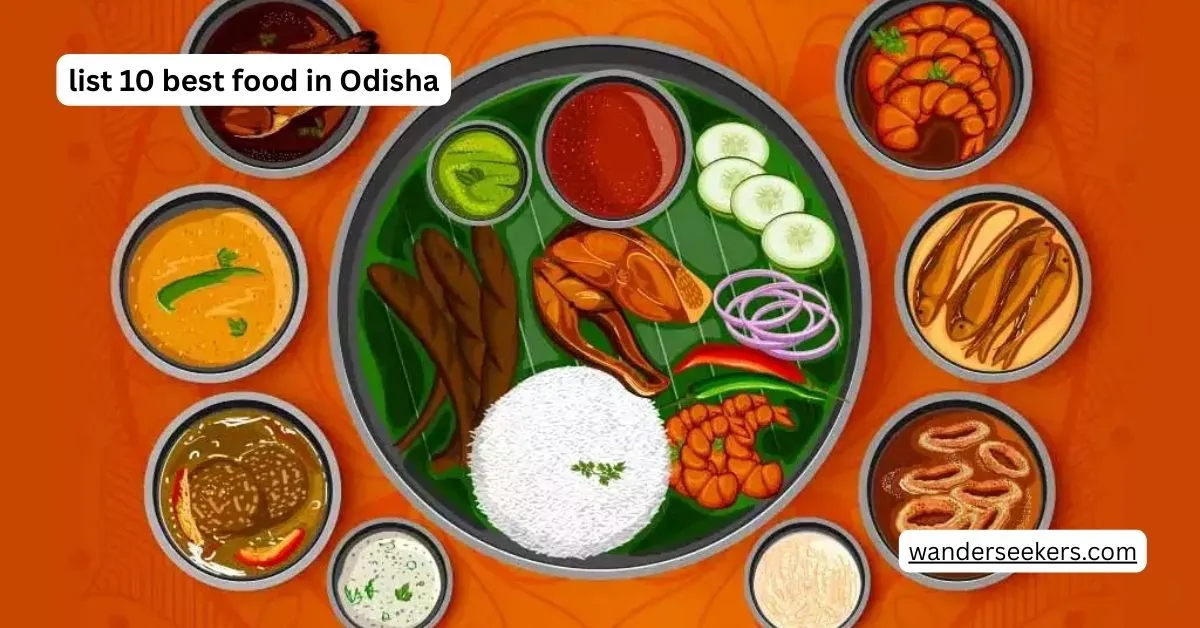Odisha’s cuisine is a beautiful blend of tradition, simplicity, and rich flavors. One of the most famous dishes is Dalma, a comforting lentil-based dish cooked with vegetables like pumpkin, raw banana, and papaya, seasoned with mild spices. Pakhala Bhata, a staple summer meal, consists of fermented rice soaked in water and curd, often enjoyed with fried or mashed vegetables. Chhena Poda, a delicious baked cheese dessert, has a caramelized crust and a soft, sweet interior, making it a favorite among locals. Macha Besara, a fish curry cooked with mustard paste and spices, is a flavorful dish that showcases Odisha’s love for seafood. Dahi Bara Aloo Dum, a popular street food, combines soft lentil dumplings soaked in yogurt with spicy potato curry, creating a perfect balance of tangy and spicy flavors. Ghugni, made from dried yellow peas cooked with onions, tomatoes, and spices, is a hearty snack enjoyed across the state. Pitha, a traditional rice cake, comes in various forms, both sweet and savory, and is often prepared during festivals. Mudhi Mansa, a unique dish from Odisha, pairs puffed rice with spicy mutton curry, offering a crunchy and flavorful experience. Macha Munda Chencheda, a dish made with fish head and vegetables, is a rustic and flavorful preparation enjoyed in many Odia households. Chungdi Malai, a creamy prawn curry cooked with coconut milk, is a rich and aromatic dish that pairs beautifully with steamed rice.
Table of Contents
1. Dalma
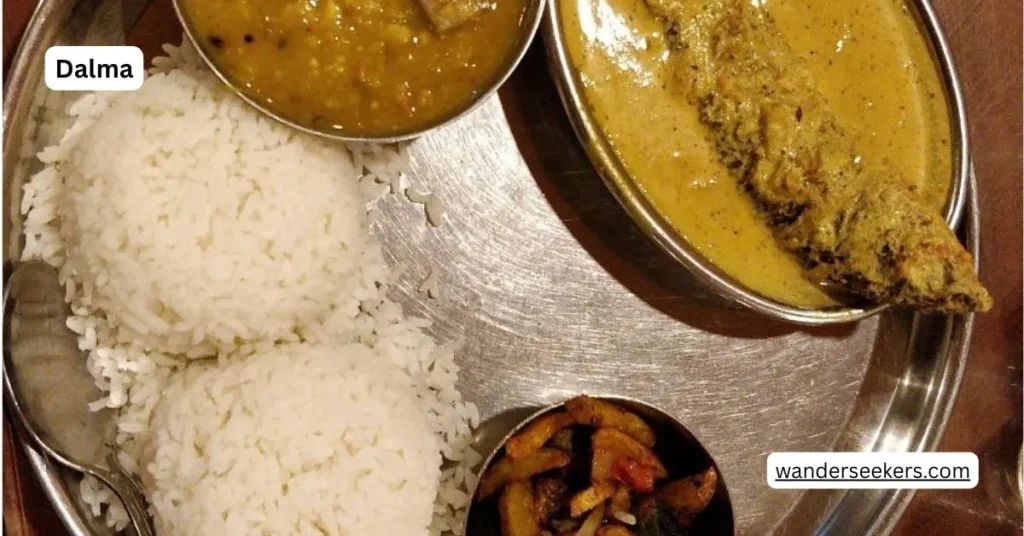
Dalma is a quintessential Odia dish that is both nutritious and delicious. It is made from roasted moong dal (split yellow lentils) and a mix of seasonal vegetables such as pumpkin, yam, raw banana, and drumstick. The dish is flavored with a tempering of mustard seeds, curry leaves, and dried red chilies. What sets Dalma apart is the use of panch phoron (a blend of five spices) and its mild, earthy flavors.
Dalma is not just a household favorite but also holds religious significance as it is offered as a prasad (holy offering) at the Jagannath Temple in Puri.
2. Pakhala Bhata
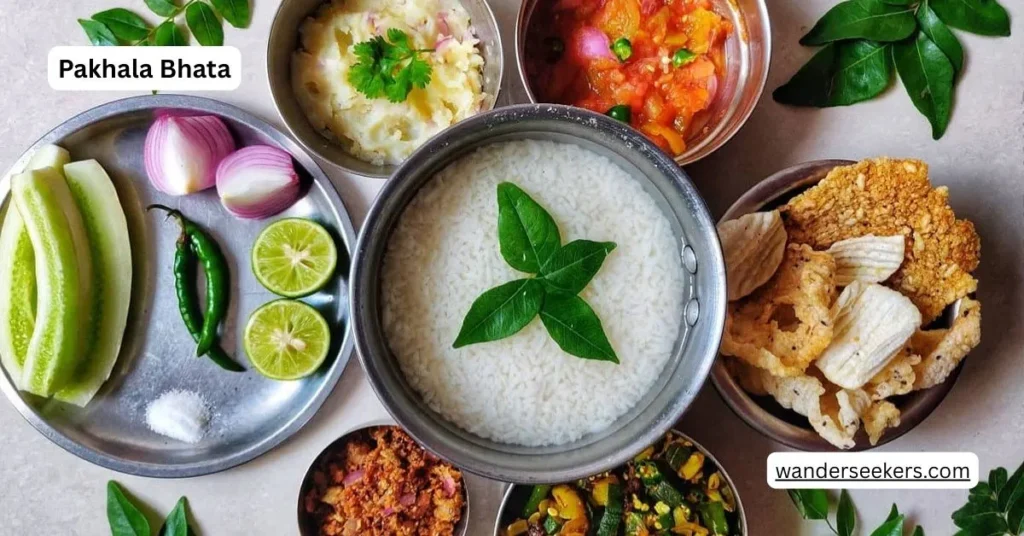
Pakhala Bhata is a traditional Odia dish, cherished for its cooling and refreshing properties, especially during the hot summer months. It is essentially fermented rice soaked in water, sometimes mildly seasoned with curd, salt, and green chilies. The fermentation process enhances its tangy taste and digestive benefits. The dish is often accompanied by a variety of side dishes like fried or roasted vegetables, badi chura (sun-dried lentil dumplings crushed with spices), saga bhaja (stir-fried greens), and fish fried or roasted dried fish. The combination of flavors—sour, spicy, and mildly sweet—makes it a wholesome and satisfying meal.
3. Chhena Poda
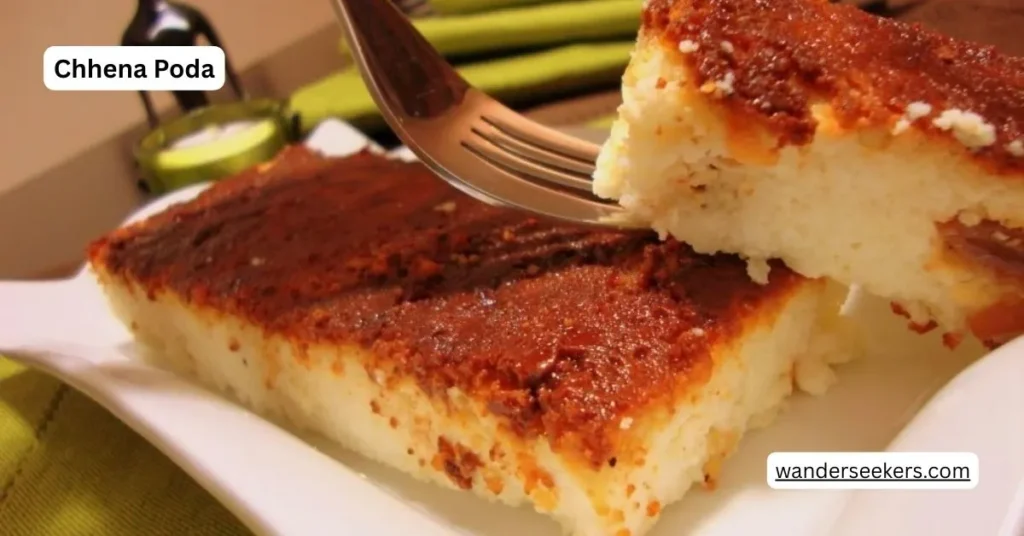
Chhena Poda is a famous Odia dessert, celebrated for its rich caramelized flavor and soft, melt-in-the-mouth texture. The name Chhena Poda means “burnt cheese,” referring to the way it is slow-baked until the edges develop a beautifully golden-brown crust. Prepared with chhena (fresh paneer or cottage cheese), sugar, cardamom, and semolina, the mixture is kneaded together and set in a banana leaf-lined mold before being baked to perfection. The slow baking allows the sugars to caramelize, giving the dessert its distinct smoky-sweet taste. Often enjoyed during festivals and special occasions, Chhena Poda is deeply rooted in Odisha’s culinary heritage.
4. Macha Ghanta
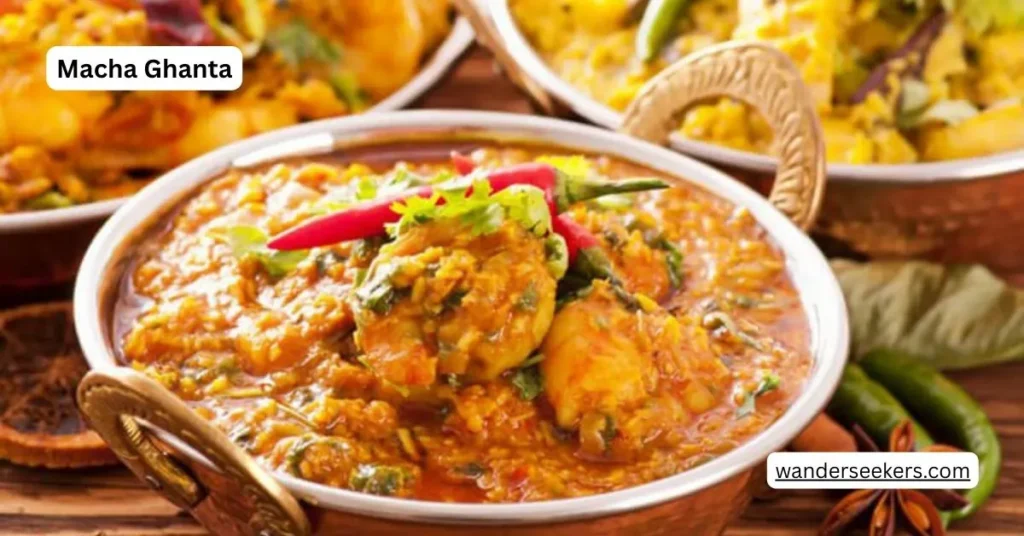
Macha Ghanta is a traditional Odia fish curry, revered for its rich, rustic flavors and deep cultural significance. This dish is often prepared during Vijaya Dashami and other festive occasions as part of Bhoga (sacred offerings). It is a flavorful medley of fish heads, potatoes, lentils, and an aromatic blend of spices. The fish head is first fried to enhance its taste, then slow-cooked with onions, garlic, ginger, and a mix of cumin, turmeric, and garam masala. The addition of lentils (usually moong dal or chana dal) gives the curry a thick, hearty texture. Some variations include seasonal vegetables, making it a wholesome dish.
5. Chungdi Malai
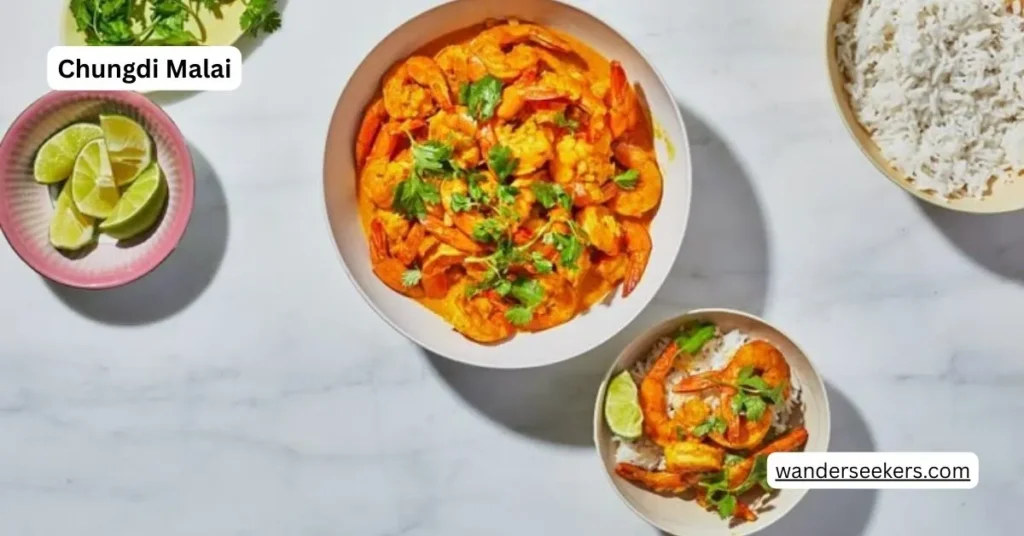
Chungdi Malai is a rich and creamy prawn curry from Odisha, infused with coconut milk and delicate spices. The dish gets its name from Chungdi (prawns) and Malai (cream), though it primarily relies on coconut milk to achieve its luscious texture and mildly sweet taste. The prawns are first marinated with turmeric and salt, then lightly sautéed before being simmered in coconut milk with aromatic spices like cardamom, cinnamon, and bay leaves. A touch of mustard oil enhances the dish’s depth, while green chilies add subtle heat. Some versions include cashew paste for extra creaminess.
6. Poda Pitha
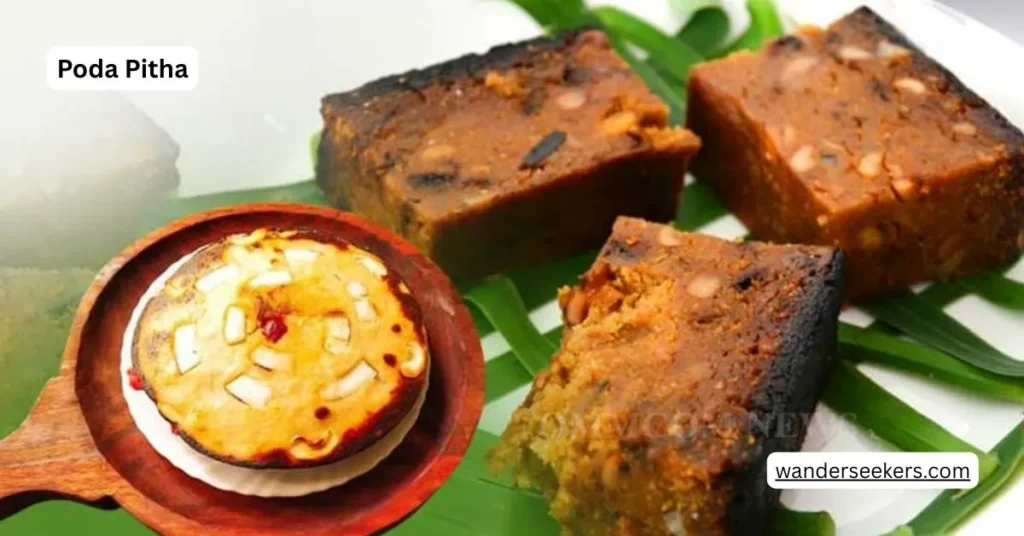
Poda Pitha is a traditional Odia delicacy, enjoyed during festivals like Raja Parba and special occasions. This slow-baked rice cake is known for its smoky flavor, crisp crust, and soft, slightly caramelized interior. The batter is made from rice flour, black gram (urad dal), jaggery, grated coconut, and cardamom, creating a rich, aromatic mixture. Some variations include chopped nuts or dry fruits for extra texture and sweetness. The batter is traditionally wrapped in banana leaves and slow-cooked over a wood fire, allowing it to develop its signature smoky taste.
7. Rasabali
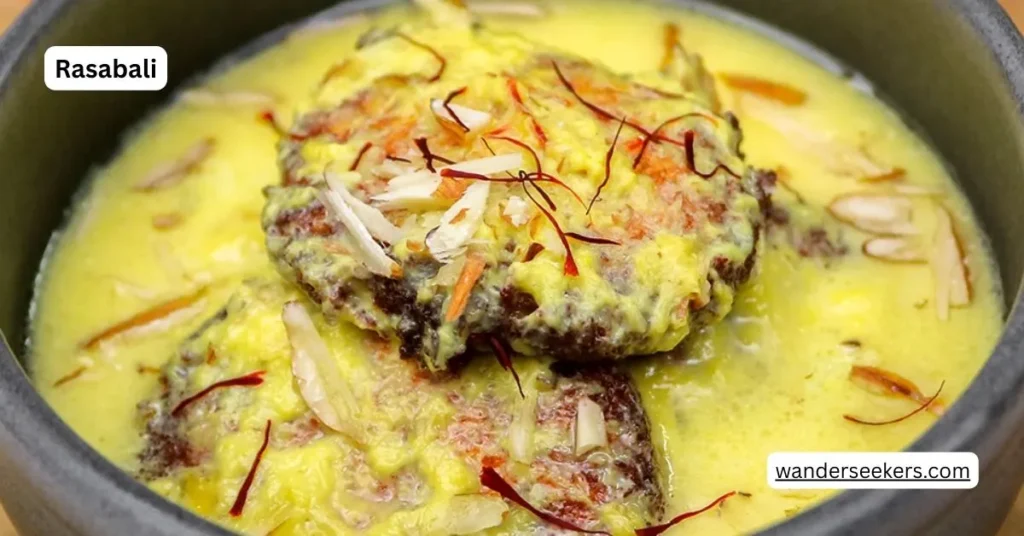
Rasabali is a traditional Odia dessert, cherished for its rich, creamy texture and delicate sweetness. Originating from Kendrapara district, it is a key offering at the famous Baladevjew Temple and holds cultural significance in Odisha’s culinary heritage. The dish consists of deep-fried chhena (fresh cottage cheese patties) soaked in thickened, flavored milk. The chhena patties are first kneaded and shaped before being fried to a golden hue, giving them a slightly crisp exterior while remaining soft inside. The reduced milk is infused with cardamom, saffron, and sugar, creating a fragrant and luscious base.
8. Kakera Pitha
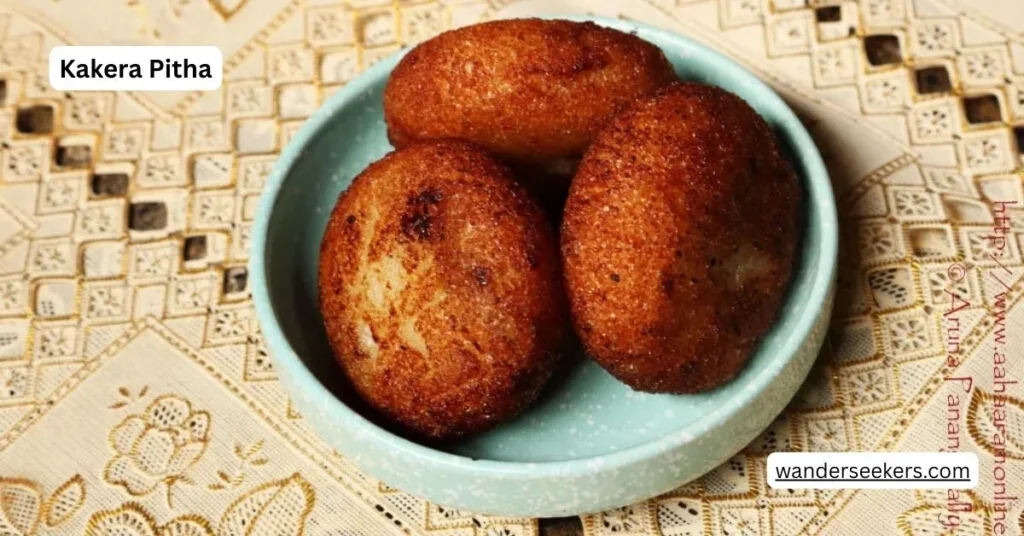
Kakera Pitha is a traditional Odia sweet, known for its soft, spongy texture and rich coconut flavor. Made with semolina (suji), jaggery, grated coconut, and cardamom, this delightful pitha is deep-fried to achieve a golden-brown crust while remaining soft inside. The preparation involves mixing semolina with jaggery syrup, grated coconut, and a dash of ghee to create a thick batter. Some variations include mashed bananas or khoya for added richness. Once shaped into small rounds, the batter is fried until crisp, resulting in a fragrant and mildly sweet snack.
9. Enduri Pitha

Enduri Pitha is a traditional Odia steamed delicacy, typically prepared during Prathamastami and other festive occasions. This fragrant and nutritious dish consists of a batter made from black gram (urad dal) and rice, filled with a sweet stuffing of grated coconut, jaggery, and cardamom. The unique preparation method involves wrapping the batter in turmeric leaves, which impart an earthy aroma and distinct flavor to the pitha. These wrapped parcels are then steamed, resulting in a soft, mildly sweet snack with a hint of herbal freshness from the turmeric leaves.
10. Santula
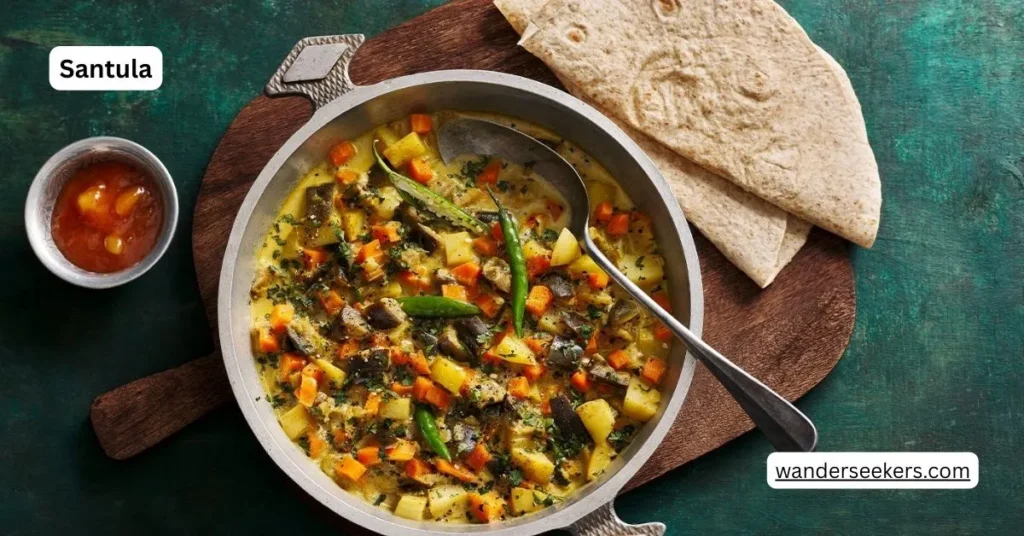
Santula is a traditional Odia vegetable dish, known for its light, healthy, and flavorful profile. It is prepared by gently cooking assorted vegetables like potatoes, pumpkin, raw papaya, brinjal, and beans in a minimal spice blend, allowing their natural flavors to shine. There are two variations—Bhaja Santula, which involves sautéing vegetables in mustard oil with garlic, chilies, and cumin, and Sada Santula, a boiled version with only a mild seasoning of salt and turmeric. Both versions are easy to digest and offer excellent nutritional benefits. Typically served with steamed rice, Santula is a staple in Odia households, appreciated for its simplicity and healthful qualities.
The Essence of Odia Cuisine
The above ten dishes represent just a glimpse of Odisha’s culinary heritage. From savory delights like Dalma and Macha Ghanta to sweet treats like Chhena Poda and Rasabali, Odia cuisine is a journey of flavors, traditions, and stories. Each dish is a reflection of the state’s agricultural abundance, coastal influence, and deep-rooted cultural values.
